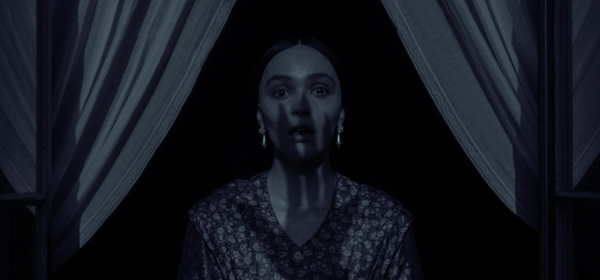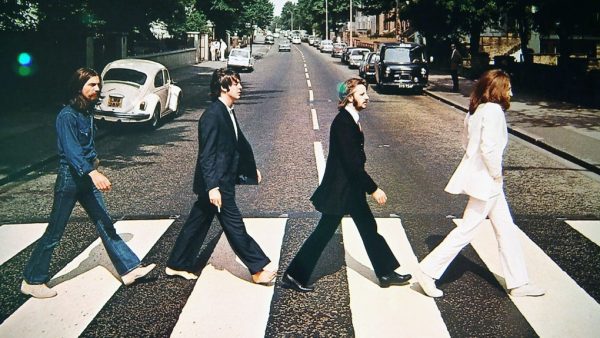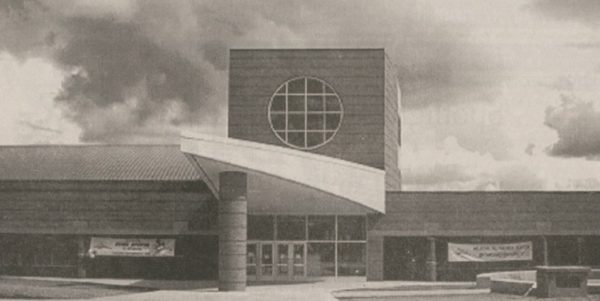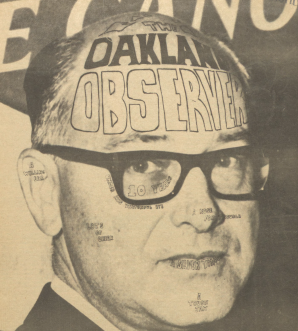Not the average break
Photo Courtesy of Susan Evans
Susan Evans bailed hay, a unique research experience, this summer.
While some university students took the summer off to work, do internships, or, actually, just relaxed, others continued their education by taking summer classes.
Similarly, few university faculty members could take summer off just to relax — most continued to work in some capacity: research for the university, a fellowship, taking an overseas trip or working in another profession. And of course, there were the faculty members who taught summer classes.
Most Oakland University faculty members said that even though many faculty may not teach classes during the summer, they usually do things that are required by their contracts, like writing books or doing academic research for publication. Many also take advantage of different opportunities around the world and bringing their experiences back to OU.
Here is how three OU faculty members spent this summer.
Susan Evans, art
Susan Evans is an associate professor of art, with a specialty in photography and new media.
She lived in a teepee in Dundee, New York, from May 21 to Aug. 2.
She didn’t do this to be one with nature. It was part of a fellowship she got through OU to study two old methods of photography — tintype and ambrotype.
She learned under John Coffer, who she said lives in a rural area and “chooses to abandon all modern technology,” including electricity, phones and running water. During her stay, she had to sleep in a teepee, and she did farmwork, gardened, pitched hay, logged wood and cooked over open fires.
“It was difficult. Everything is slowed down,” she said.
She said she chose Coffer because he’s one of the people who has been doing these two types of photography the longest and because with others, she could only do a couple workshops. Whereas with Coffer she took over two months.
“It was hard work, but I learned a lot,” Evans said.
Tintype and ambrotype photography are two of the oldest forms of photography. They were popular from the 1850s to 1890s, but is making a resurgence now, she said.
Ambrotype puts glass piece covered in a gel, and tintype puts a metal tin piece, inside the camera, and instead of taking the picture on a film negative or as a digital file, the photo is directly imprinted on the glass or on the tin.
“The purity is cleaner. You can’t get more perfect,” she said. “There are no copies of this — only one original.”
“This is making subjective an objective medium in a similar way a painting could have subjectivity,” she said, because things like the texture of the glass or tin makes the artwork different. “There is evidence of the artist’s hand in this.”
She said after her experience, she hopes to help foster and build a network for these types of photography like they had in the old days. She said she also hopes to have workshops at OU demonstrating tintype and ambrotype photography this semester.
Anne Switzer, library
Anne Switzer is an associate professor of library and information services and outreach librarian at OU’s Kresge Library.
During the regular school year, other than doing her share of manning the reference desk, she said she also teaches library instruction to students in Writing 160, develops library collections and does outreach programs.
As the library liaison to the School of Education and Human Services, she teaches library instruction to their masters and doctoral students, and orders books and electronic resources for the school of education.
She also said each of the 12 library faculty members have a different focus.
“Mine is outreach activities,” she said. Her tasks include organizing things like poetry slam, a writers’ group and book clubs.
The 12 librarians, like most faculty, work on an eight-month contract, meaning they teach classes and physically work in the library for eight months, she said. They take a semester off each year on a rotating basis, and because the workload is lighter during the summer than during the fall and winter, there are usually only five of them then.
“I can’t take fall or winter off because of all the outreach events,” Switzer said.
During her semester off, she is still busy with work, because like most faculty members on the tenure-track, she’s required to do research and publish in professional journals.
“If you don’t do research and parts of tenure, you can’t keep your job,” she said. She will know in 2012 if she’ll be a tenured faculty member at OU.
She said she is currently working on an article on library services available to alumni and another on masters and doctorate students using resources like the writing center.
She said currently the only connection with OU’s library to alumni is a book-to-movie club, but she heard of other services different universities give them, like online resources.
“It would be too expensive to offer [alumni] the same thing” as current students, she said. So she wants to do a survey to “see if there’s a demand, make sure it’s not a waste” and publish her findings.
The other article she’s writing is on a workshop OU’s writing center did in January 2009, offered not just to undergraduate students, but also to graduate and doctorate students. The writing center is located inside the library.
She said because of her business, she hasn’t gone anywhere far away this summer.
“Untenured people generally don’t go anywhere. Some tenured people do,” she said.
Lizabeth Barclay, for example, a tenured professor of management took a two-week safari to Tanzania this summer.
Kerry Knox, theatre
Kerry Knox is an associate professor of theater, with a specialty in theater set design.
Typically, he doesn’t teach during the summer, but has done the summer Greek theater study abroad program in Greece with generally one to six other OU students. This year was the first year the program didn’t have any students sign up, which he thinks is related to the economic and political situation.
Instead, this summer he took two OU students with him to Ukraine for two weeks to study and teach theater design. Later in the summer, he took a trip to Indonesia, where he took in some local theater.
Knox was a keynote speaker in the First Transatlantic Ukranian-American Seminar on Theatrre Arts, which Pavlo Bosyy, a former OU faculty, put together in June in Lviv, Ukraine.
Knox said he spoke on lighting on alternative theatre spaces and also demonstrated it to the conference by doing the lighting on the plays “Counting Iceberg” and “Medea,” which the OU students helped with. He said he used specific lighting to help show the mood, like using stark light to show tragedy, warm to show happiness and weird to show magic.
“In Eastern Europe lighting design is at its infancy,” Knox said.
He said he looked at theaters in Lviv, Kirovgrad and Kiev, and performed “Medea” several times.
“As a designer, any place I go, I’m looking at how they do it,” he said. “I’m always doing research, no matter where I go.”
The Ukraine trip was officially academic, but the Indonesia trip was personal.
“The university didn’t pay for this research,” he said.
It started as a two-and-a-half week scubadiving
trip in Indonesia, and after the scuba crew left, he said he stayed there an extra five days and took in some more local theater, mostly in Bali.
“Balinese theater, or all Asian theater, integrates music, theater, dance and poetry,” Knox said. “There is no separation of arts there.”
He said because he was at a tourist location, parts of the plays were in English, although most was in the local language, so he had a little difficulty understanding the words. But he didn’t mind that much “because its movement oriented. All of it is told through movement. The text is nice, but I’m happy to let the action tell the story.”
He said these out-of-the-classroom experiences are not only nice for the faculty to do, but also essential for the students.
“Everyone thinks you got an easy job — teach eight months, take four months off. But if you’re not advancing in these four months, you’re not doing your job,” he said. “Seeing what’s out there in the world and bringing it to your students is pretty essential.”
He said using summers and sabbaticals to travel and get these experiences or working professionally is important particularly for arts and theater faculty members so they can know what it’s like in the working world and bring it into the classroom.
“We’re training them to go into a profession, and if we lose track of what’s out there, we can’t give them what they need,” he said.
Another theater professor, Karen Sheridan, directed a play in Wisconsin.
“It’s one thing to do one conference, but theater performances is so hard to do in the academic year,” Knox said. “Summer allows that to happen.”







